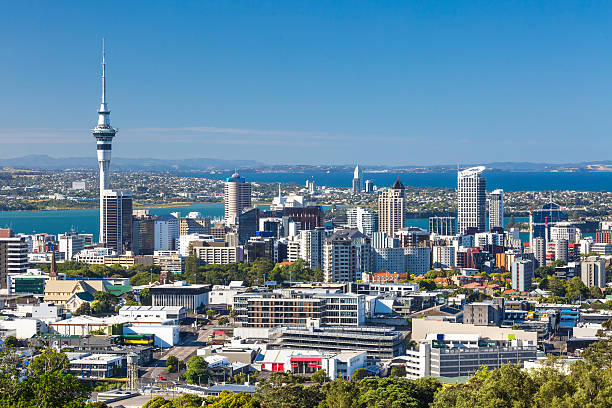Eritrea Travel Guide: All you need to know to visit Eritrea in 2024
Welcome to Eritrea
Eritrea is one of the countries located in the eastern part of Africa. The Red Sea borders it to the northeast and east, Sudan to the west, Ethiopia to the south, and Djibouti to the southeast.
Geography
Eritrea covers an area of approximately 117,600 square kilometers, making it the 22nd smallest country in Africa and 101st in the world. Eritrea has a high central plateau that varies from 1,800 to 3000 meters above sea level, a coastal plain, western lowlands, and some 350 islands comprise the remainder of the Eritreas’s land mass. The highest peak in Eritrea is Mount Soira, at 9,885 feet (3,013 meters). Moreover, several seasonal rivers and lakes flow through Eritrea, such as Anseba and Bakaria to the north, and the Gash and Tekeze rivers on the border with Ethiopia flowing to the west into Sudan.
Climate
Eritrea generally experiences an arid climate, with about 70%of its land area classified as hot and arid, receiving average annual rainfall of less than 350mm. The country is one of the places with the lowest and hottest places on earth, known as Dallo(Danakil depression), with temperatures of about 50°C(145°C). The weather in Eritrea is mainly influenced by the southwest monsoon winds from Ethiopia and also the quasi-random internal variability of the coupled atmosphere oceanland ice system. The eastern lowlands and the country’s coastal regions undergo high temperatures ranging from 30 to 39°C during the hot summers between June and September. The temperatures during cooler winters, from October to May, vary slightly between 25 to 32°C. Most regions in this country experience less than 300mm of precipitation annually, and droughts are common. Eritrea is also known for long drought-related conditions and struggles with the impact of recurrent droughts. The region is also known for flooding during the rainy season and other natural hazards such as desert locusts and infestations.
Population
According to recent United Nations data, the population of Eritrea is approximately 3,680,753. Eritrean people are also diverse, with various ethnic groups and languages being represented. Generally, nine officially recognized ethnic groups in Eritrea are Afar, Blien, Hidareb, Kunama, Nara, Rashaida, Saho, Tigre, and Tigrinya. In Eritrea, reference to indigenous people is mainly based on the claim of originality made by some Eritrean Tribes such as Afar, Kunama, Saho, and Nara. The population of Eritrea is relatively young, with the median age at around 19.2 years. It has a relatively high infant mortality rate of 28.570 deaths per 1000 live births. Life expectancy is also low at approximately 64 years.
Languages
Eritrea is a diverse country with many different languages spoken by the people. Eritrea has nine official languages: Tigrinya, Tigre, Saho, Kunama, Rashaida, Bilen, Afar, Beni, Amir, and Nera. Most people in the country usually speak Tigrinya, and the government also uses Arabic. In Eritrea, most schools are government owned and free of charge. English is also used in the country, and Italian was used in the past.
Religion
Two major religions in Eritrea are Christianity and Islam. Eritrea was the ancient Aksum kingdom and was among the countries to adopt Christianity as a state religion. Today, some government, religious and international sources estimate the population to be 49% Christianity, predominantly Eritrean Orthodox, and 49% Sunni Muslim.
Government
Eritrea has a presidential system of government. The constitution of the country being used today was adopted in 1997. Eritrea’s president is the state’s head, currently Isaias Afwerki. Since 2003 up to date, Eritrea has never had any national elections. The president appoints cabinet ministers and other high-rank officials. The national assembly in Eritrea is unicameral with 150 seats, 75 seats indirectly elected by the ruling party and 75 directly elected by simple majority vote. Members serve five-year terms.
Economy
The Eritrean economy heavily relies on agriculture, light industry, fisheries, and services, including the economy. Eritrea has extensive resources such as copper, gold, granite, marble, and potash. Agriculture has long provided the livelihood for most of the population, though it accounts for only a fifth and half of its merchandise exports.
Culture
Eritrea’s culture has a collective nature that arises from the cultural legacy of the diverse indigenous populations inhabiting Eritrea. The country has various and often quite similar traditions practiced by the nation’s many Cushitic and Ethiopian semiticspeaking AfroAsiatic ethnic groups, in addition to those practiced by the area’s Nilotic minorities.
Recent History
Fighting was primarily subsidized during the first ceasefire period from March through August 2002. The Ethiopian Tigray peace agreement signed in November 2002 established a permanent ceasefire between Ethiopia and Eritrea.
Related Articles

5 min read
New Zealand Introduces Key Changes to Post Study Work Visa : What You Should Know
According to the government, this change will provide students with greater flexibility in their academic choices while ensuring they remain eligible to work. For many students, studying abroad is a
Read More
5 min read
The Singapore visa processing time for Indian citizens
Singapore is a small island located in the Malay Peninsula in Southeast Asia. It is one of the most economically developed countries in the world. Singapore is a fantastic place
Read More
5 min read
How Much Does an Australia Trip Cost from India?
If you are planning a trip from India to Australia, you must follow some of the points. that are : Planning Budget Traveling date and time To which place you
Read MoreTo enter the Republic of Eritrea, individuals of Indian nationality need a visa. Visas are available from the embassy of Eritrea or the consulate located in India.
Choose the Eritrean visa category you need, and Pay online; please send us your documents using our pick-up and drop-off services; upon approval, receive your visa.
To apply for an Eritrean visa online, the earliest one can submit the request is two months before the intended travel date.
Visa validity goes for 90 days from the date of issue.
Visas on arrival are available at Asmara Airport.
Afghanistan travel checklist
- Valid passport
- Visa
- Flight tickets
- Travel Insurance
- Accommodation booking confirmation
- Supporting documents
- Emergency contact information
- Travel itinerary
